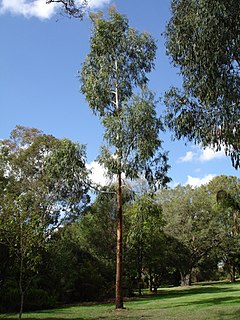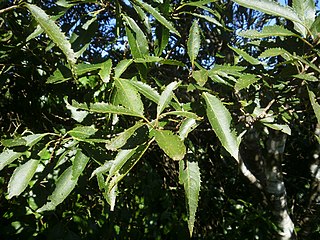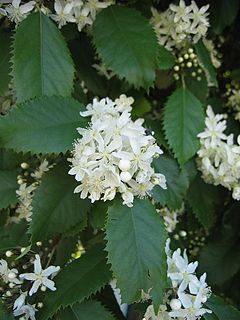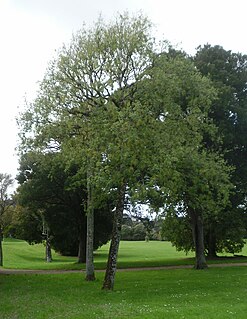This page is based on this
Wikipedia article Text is available under the
CC BY-SA 4.0 license; additional terms may apply.
Images, videos and audio are available under their respective licenses.

Abies balsamea or balsam fir is a North American fir, native to most of eastern and central Canada and the northeastern United States.

Eucalyptus viminalis, the manna gum, ribbon gum, white gum, or viminalis, is an Australian eucalypt.

Lagetta lagetto is a species of tree native to several Caribbean islands. It is called the lacebark or gauze tree because the inner bark is structured as a fine netting that has been used for centuries to make clothing as well as utilitarian objects like rope.

Laurelia novae-zelandiae, also called pukatea, is a large evergreen tree, endemic to the forests of New Zealand. Pukatea has 'toothed' leaves and produces small flowers. It is a species in the Atherospermataceae family, typical representative of laurel forest ecoregion.

Illicium parviflorum, known locally as swamp star anise, is a species of flowering plant in the family Schisandraceae, or alternately, the Illiciaceae. It is native to Florida in the United States. It historically occurred in Georgia, as well, but it has been extirpated from the state. Its common names include yellow anisetree, yellow-anise, swamp star-anise, and small anise tree.

Ulmus parvifolia, commonly known as the Chinese elm or lacebark elm, is a species native to eastern Asia, including China, India, Taiwan, Japan, North Korea, and Vietnam. It has been described as "one of the most splendid elms, having the poise of a graceful Nothofagus".

A plant community is a collection or association of plant species within a designated geographical unit, which forms a relatively uniform patch, distinguishable from neighboring patches of different vegetation types. The components of each plant community are influenced by soil type, topography, climate and human disturbance. In many cases there are several soil types within a given phytocoenosis.
Houhere is the Māori language name for a genus of plants called Hoheria or lacebark, and may refer to the following plants from New Zealand:
Plagianthus divaricatus or saltmarsh ribbonwood is a plant that is endemic to New Zealand. The Māori name is makaka.

Hoheria sexstylosa, the long-leaved lacebark or ribbonwood, is a species of flowering plant in the family Malvaceae, endemic to New Zealand. It is an evergreen tree or shrub growing to 8 m (26 ft) tall by 6 m (20 ft) broad with glossy green leaves, and white flowers in summer and autumn. This tree tends to have a weeping graceful habit and is sometimes sold by nurseries with the name graceful lacebark. The Latin term sexstylosa means "six styles".

Hoheria glabrata, the mountain lacebark or ribbonwood, is a species of flowering plant in the family Malvaceae, endemic to New Zealand. It is one of the few deciduous trees to be found in N.Z. growing to 10 m (33 ft) tall with green leaves that turn yellow in autumn, and white flowers that appear around January.

Hoheria populnea, commonly known as New Zealand mallow, lacebark or houhere, is a species of flowering plant in the family Malvaceae, endemic to New Zealand.

Hoheria angustifolia, the narrow-leaved lacebark or narrow-leaved houhere, is a species of flowering plant in the family Malvaceae, endemic to New Zealand.
Plagianthus betulinus or ribbonwood is a tree that is endemic to New Zealand. One of the distinctive aspects of this tree is that it is usually deciduous which is unusual for New Zealand.
Lacebark tree is a common name for several plants with a inner lace-like layer of the inner bark, and may refer to:
Mountain lacebark may refer to two New Zealand trees in the mallow family:-












